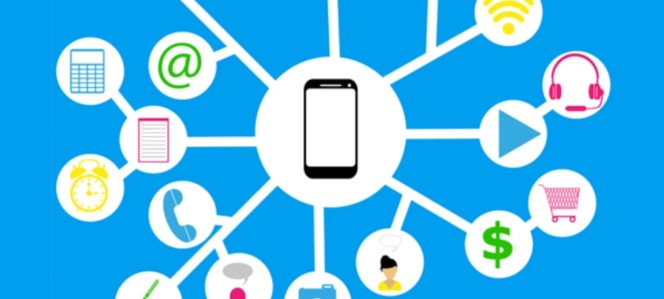📱 How Cellphones Can Be Educational Tools: Learning at Your Fingertips
In the past, cellphones were often viewed as distractions in the classroom—associated with texting, social media, and games. But as technology advances, so does the potential of these pocket-sized devices. Today, cellphones are evolving into powerful educational tools that can support learning anytime, anywhere.
In this blog, we’ll explore how cellphones are transforming education, the benefits they offer, and how to use them responsibly to unlock their full potential.
🎓 Why Cellphones Belong in Education
Cellphones are no longer just communication devices—they are mini computers packed with tools that support research, collaboration, creativity, and organization. When used wisely, they can:
- Extend learning beyond the classroom
- Cater to different learning styles
- Increase student engagement
- Make education more accessible and inclusive
📚 10 Ways Cellphones Can Be Used as Educational Tools
1. Access to Information and Online Learning
Cellphones offer instant access to search engines, e-books, academic websites, and videos. Students can research topics, read up on current events, and explore deeper learning in subjects like science, math, and history.
📌 Example: A student stuck on a math concept can quickly watch a Khan Academy video to understand it better.
2. Educational Apps and Tools
From language learning apps like Duolingo, to flashcard tools like Quizlet, and coding apps like Grasshopper, cellphones provide diverse apps tailored to different subjects and skill levels.
📌 Example: Students can use Google Classroom, Notion, or Evernote to organize assignments, take notes, and manage tasks.
3. Interactive Learning Through AR and VR
Some apps turn cellphones into augmented reality (AR) and virtual reality (VR) tools. These technologies make learning more immersive and engaging.
📌 Example: Apps like Google Expeditions let students explore ancient ruins or the human body in 3D—without leaving their classroom.
4. Reading and Audiobooks
E-book apps and audiobook platforms help students read more—even those who struggle with traditional texts.
📌 Example: Using Audible or LibriVox, students can listen to literature while commuting or doing chores.
5. Improved Communication
Teachers, students, and parents can communicate efficiently via messaging apps and school platforms.
📌 Example: A class WhatsApp group or Remind app helps students stay updated on assignments or discuss homework problems.
6. Note-Taking and Recording
Students can use the phone’s voice recorder, camera, and note apps to capture lectures, record reminders, or document classroom experiments.
📌 Example: A biology student records a dissection demo to review it later before exams.
7. Global Learning and Cultural Exchange
Cellphones open doors to the global classroom. Students can connect with peers in other countries, learn new languages, and understand different cultures.
📌 Example: Platforms like PenPal Schools or Zoom exchanges enable cross-cultural projects and virtual field trips.
8. Creativity and Content Creation
With built-in cameras and editing tools, cellphones let students create videos, podcasts, digital art, and photo essays for assignments.
📌 Example: A student might film a documentary-style video about climate change as a science project using just their phone.
9. Accessibility for All Learners
For students with disabilities, cellphones offer speech-to-text, screen readers, audio feedback, and magnification tools.
📌 Example: A visually impaired student uses VoiceOver on iPhone or TalkBack on Android to navigate educational content.
10. Self-Directed and Personalized Learning
With phones, students can learn at their own pace and revisit content when needed.
📌 Example: Language learners can use apps daily for practice, track their progress, and get personalized feedback.
🛡️ Responsible Use: Managing Distraction and Screen Time
While cellphones offer immense value, they also come with risks like overuse, distraction, and cyberbullying. Here’s how to encourage responsible use:
- Set clear classroom rules and time limits
- Use apps that block non-educational content during study time
- Teach digital citizenship and online safety
- Encourage balance between screen time and physical activity
🏫 Real-World Example: Cellphones in the Classroom
In some forward-thinking schools, teachers incorporate phones into lesson plans:
- Polls and quizzes using Kahoot or Socrative
- QR code scavenger hunts for history or science lessons
- Live translations for multilingual classrooms
- Podcast assignments for English or Social Studies
These practices turn a common device into a collaborative and creative learning aid.
🔮 The Future of Mobile Learning
As 5G spreads and AI-powered apps grow smarter, the role of cellphones in education will expand. In the future, we may see:
- Personalized learning assistants (like AI tutors on phones)
- Augmented textbooks and science experiments
- Real-time translation for multilingual classrooms
- Integration with wearable tech for physical education
✅ Conclusion: Pocket-Sized Potential
Cellphones, when used intentionally, can be more than entertainment gadgets—they can be lifelong learning companions. They break down barriers of time, space, and accessibility, helping students explore, connect, and grow.
With the right guidance, policies, and mindset, cellphones can empower the next generation of learners to reach their full potential—one tap at a time.
